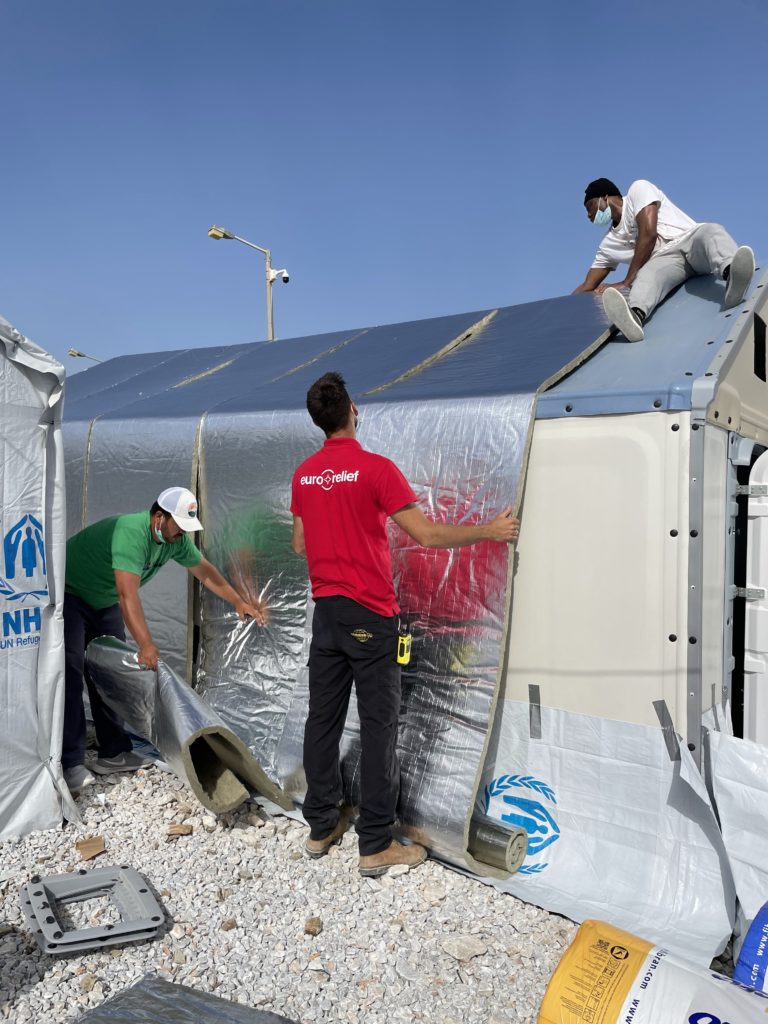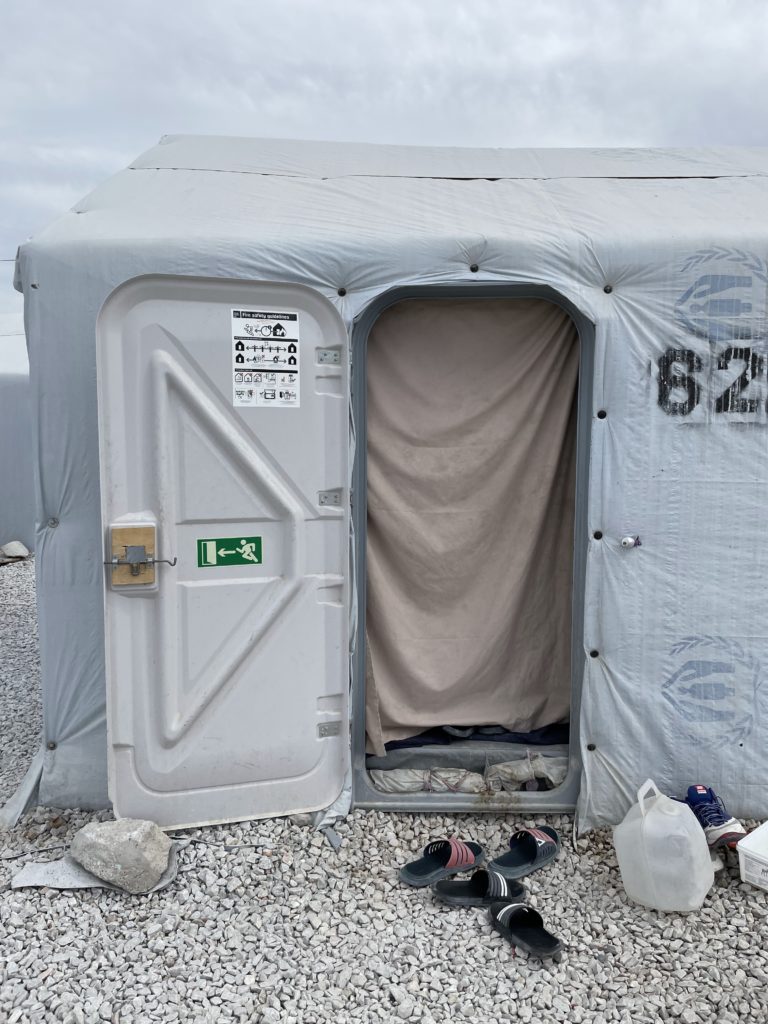Phyllis Tsang is an architect and Technical Advisor for Eurorelief, an organisation dedicated to supporting refugees across Greece. She joined their operations in Lesvos, where Polish Humanitarian Action (PAH) provided Relief Housing Units (RHUs) for migrants arriving on the Greek island after making the dangerous journey across the Mediterranean.
Phyllis’s own humanitarian journey is closely linked to the RHU. After learning about Eurorelief’s partnership with PAH and their joint shelter initiatives, she took a leap of faith to reorient her career trajectory. When she arrived in Lesvos, Eurorelief was tasked with the implementation of the first 118 RHUs delivered by PAH. And then came 167 units from UNHCR. Confident that her architectural training would be an asset on the field, she rolled up her sleeves and joined the Eurorelief team.
“We just started building the first RHUs in camp, which immediately captivated me.”

Eurorelief works closely with camp management in the Hotspots/CCAC (Closed Control Access Centers), which connects them to the communities and environment, helping to identify specific needs for current, and incoming refugees. Working tactically on the field, building RHUs out of their flatpack boxes, Phyllis quickly identified opportunities to adapt details to the unique contexts in Lesvos.
The way Lesvos experiences climate is not entirely dependent on temperature. In winter, Lesvos’s low is a mild 10º C, but with high, gusty winds, the climate can feel piercing. It was crucial, then, to adapt the RHUs by developing a winterisation programme.
“Since this was something completely new, the team on the ground had to improvise along the way.”



With the approval from Camp Management, Phyllis and Eurorelief began with ad hoc solutions to insulate an RHU from the inside. They built their first prototype by mounting mineral wool (fiber made by spinning molten mineral or rock) to the interior facing poles with mesh wire. However, the mineral wool caused irritation to the skin and eyes since it is not designed to be exposed. Their first prototype was considered unsuccessful, and they refocused on insulating the exterior instead.
One of the major changes they made to the new prototype was to cut out the use of mesh wire to mount the mineral wool, in favour of leftover nuts and bolts from the RHU flatpack. This second phase of prototyping was a collaborative effort between volunteers and camp residents, each contributing their skills to develop a building routine that is still in practice in the winterisation programme today.
The Eurorelief team then gained the approval of Camp Management to winterise all RHUs at the camp. With experienced trainers, and a consistent flow of committed volunteers, the Eurorelief team can insulate at least two RHUs per day.
“It was a joint effort between our international volunteers, resident volunteers in the camp, and other organisations who lent a hand.”
After learning about the winterisation programme, Better Shelter visited Phyllis and Eurorelief in Lesvos. The meeting inspired the Eurorelief team to continue prototyping on the RHU, focusing on the core mission of Better Shelter’s sheltering process: cladding the steel frame with localised solutions, inspiring user creativity to make use of materials that are closer to their local supply chain. Revisiting the earliest idea to insulate the interior, Phyllis developed a sandwiched panel with wire mesh, tarps, and insulation. One year since the latest prototype was developed, and it has successfully provided thermal comfort through the winter.

Contact us
Get in touch to learn more about our work, how to become a partner, and our technical assistance.


